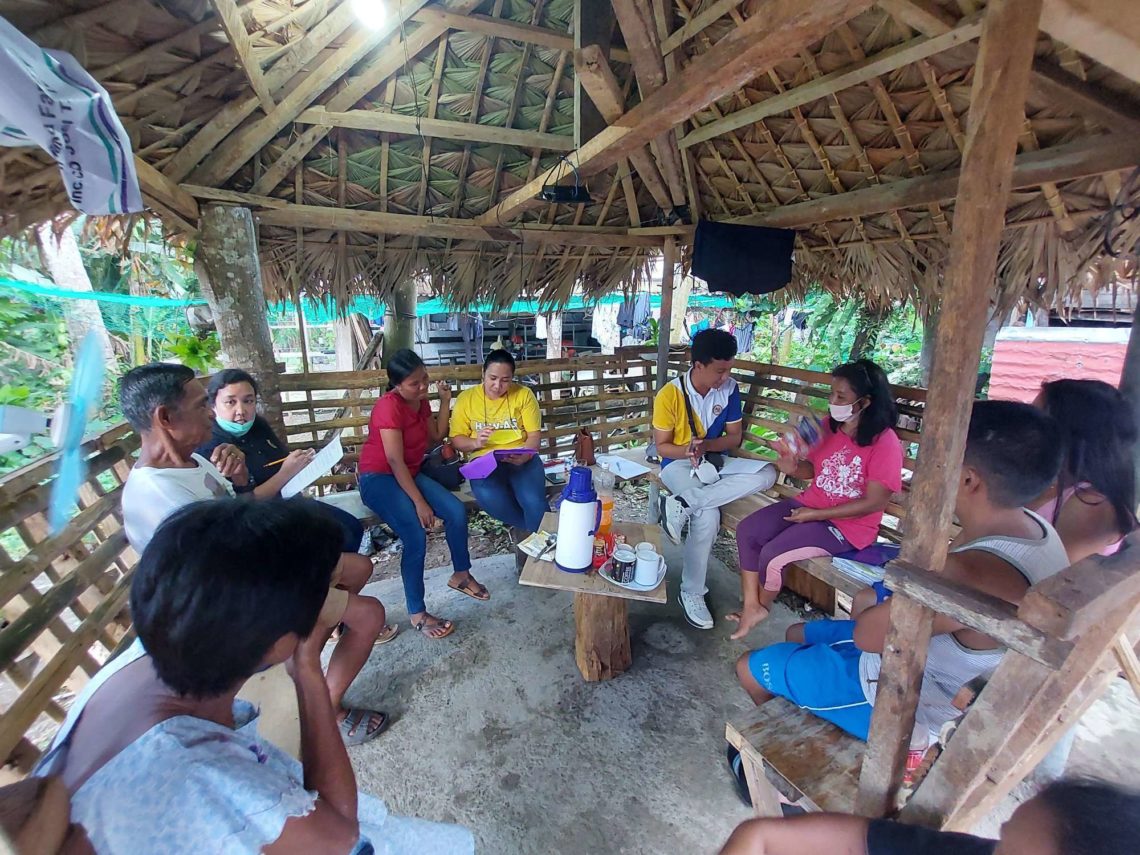Make your 2X MATCHED gift today!
This week only: Every $1 will be matched with $2 to empower women worldwide.
This week only: Every $1 will be matched with $2 to empower women worldwide.
Posted on 09/30/2022

The island province of Catanduanes is situated in the Philippine Sea. Many of the 270,000 residents are small shareholder farmers and fisherfolk. Unfortunately, people of the island are no stranger to devastating natural disasters.
In late January 2020, the CoVID-19 disaster hit the Philippines. Government travel restrictions were quickly initiated and the social and economic life of Catanduanes was slowed to a crawl. The pandemic disrupted Catanduanes State University Extension Services (CatSU) and their ability to reach small farmers and fisherfolk on the island. How could CatSU disseminate effective agricultural/fishery practices without visits with beneficiaries?
Like most disasters, an extended CoVID recovery effort was needed. For CatSU Extension this meant venturing into a new way of operating. The Grameen Foundation’s Farmer-to-Farmer Philippines Project and the CatSU Extension leadership invited me to help meet this challenge.
Our objective was to build a “New Normal” strategic plan. Planning and consultation sessions were conducted via Zoom since travel was not possible. Our work began with the clarification of values including CatSU’s commitment to client-centered, relevant, realistic, inclusive, and respectful services that add value to farmers. Next an e-Survey tool was built to collect a base of input to benchmark the dimensions of a new vision for the New Normal.
Stakeholders were gathered to provide input into plans and possibilities via the e-Survey and on-going consultations. Stakeholders included: farming/fishing cooperatives, intended beneficiaries, The Grameen Foundation, F2F, the CatSU extension workers and faculty at the College of Agriculture and Fisheries, Local Government Unit - Municipal Agriculture Office (LGU-MAO), Philippine Coconut Authority (PCA), Philippine Fiber Industry Development Authority (PhilFIDA), and intended beneficiaries. In total 53 individuals responded to the e-Survey. Mark Bonafacio, a local Grameen Foundation volunteer, contributed meaningful observations from his 38 beneficiary interviews. In the e-Survey, stakeholders, beneficiaries, and the extension workforce expressed wellspring of confidence in CatSU’s ability to help small shareholders.
Prior to COVID, extension workers and local service providers examined local needs by seeing problems and hearing stories. Solutions were addressed and adapted spontaneously. New Normal success depends on the network of providers working together toward the same goal. Regular communications and shared service delivery commitments are essential in the New Normal.
Various information and communication technologies (ICT) were recommended to supplement in-person activities and to expand the use of training materials in the New Normal. The adoption of new delivery methods could be possible due to ample ICT experience beneficiaries reported during their interview. This included recent experience with SMS/texting, Facebook, radio, and mobile phone.
While WiFi is freely available in municipal buildings, beneficiaries reported low comfort in using it. At the same time the CatSU Extension’s workforce was confident in using ICT advances. CatSU capabilities opened the door to wider acceptance of digital resources in the New Normal.
The e-Survey revealed general confusion of beneficiaries regarding where they go for financial and business planning advice. The New Normal plan recommends inviting the PCA, PhilFIDA, LGU-MAO to convene annual gatherings of experts and beneficiaries for financial management, micro-loan application guidance, and evidence-based practice trainings. In a departure from traditional approaches, beneficiaries could engage in peer-to-peer exchanges of real-world solutions using online forums. Gatherings could be held in-person and online as travel allows. Training sessions could be video recorded for re-use.
Improved tracking and coordination were recommended in the New Normal. Upgrades to existing CatSU Extension forms could result in better monitoring of individual and aggregate problems, progress, and interventions. This data could lead to more responsive programming.
The e-Survey also suggested that the CatSU-Extension workforce could deliver effective online services to beneficiaries. Online programs could supplement face-to-face visits. Training and coaching programs could be held in-person, broadcast live, hosted on the air and recorded for retrieval from a digital library from the CatSU website. CatSU’s radio broadcasts, YouTube videos, and Facebook page are available channels for digital storage and learner access to training and coaching modules. The training could be available asynchronously (anytime WiFi is available).
The use of ICT is already underway for CatSU Extension. In this regard, the New Normal has already arrived. The hope is to continue this progress. The New Normal plan advocates for the practical use of everyday devices and open-source applications to create enduring digital resources.
Next steps include discussion of an SMS messaging pilot, adaptation of CatSU Extension’s needs assessment into digital format, outline of the digital library offerings, update of the client satisfaction survey, and a new training plan for the extension workforce.
As I reflect on my engagement with the Grameen Foundation’s Farmer-to-Farmer project and Catanduanes State University Extension leadership, I am deeply appreciative of the opportunity to offer a helping hand in this time of transition. I am also thankful for my recent work with the HRH2030 Philippines and the Department of Health e-Learning Academy. Previous assessment visits in 9 provinces and countless barangays prepared me with a base of understanding regarding the country and the countryside. I understood the challenges of rural service delivery and the powerful impact of nature on the land and the people. This background made it possible for me to conduct the scope of work at-a-distance.
But even from a far, the unique nature of the Catanduanes people was notable. I especially appreciated the enduring loyalty and dedication of the young people who gain new knowledge and chose to engage in service on their home island of Catanduanes. My reflection carries with it a minor sense of regret. I truly missed the face-to-face time with my planning partners in Catanduanes.